I'M WITH YOU ALWAYS - THE ENDURING LEGACY OF MIKE BLOOMFIELD
February 15 – "Parinirvana" is known as Nirvana Day in Mahãyãna Buddhism. This day honors the death of Buddha and his attainment of final nirvana." (Always knew Mike Bloomfield was the Blues Buddha!)
Mike Bloomfield is arguably my favorite electric guitarist. He was probably the first I'd heard that combined virtuosity with "blues with a feelin'" like few before or after. He passed into the next dimension on this date in 1981... a mere 37 years old... This piece, written for Fretboard Journal a few years back was a crazy-quilt of quotes from friends and admirers - enjoy!
I'M WITH YOU ALWAYS - THE ENDURING LEGACY OF MIKE BLOOMFIELD
“Michael & Alan” by Norman Rockwell
The first son of the Wrigley's Chewing Gum girl and a Windy City restaurant supply tycoon (and one time boxer) who manufactured sugar, salt and pepper shakers found in every American diner from coast to coast, Michael Bernard Bloomfield was an original who followed in no one's footsteps. Born in Chicago in July, 1943, Mike wanted nothing to do with the family business, much to his father's chagrin. Picking up his first guitar at age thirteen, Bloomfield was inspired by Scotty Moore, Chuck Berry and Cliff Gallup, before discovering local South Side heroes Muddy Waters and Howling Wolf's guitarist Hubert Sumlin. Brilliant but bored with school, Michael soon became obsessed with the guitar.
With the folk revival of the early 1960's in full throttle Mike could be found hanging out at the Chicago folk club the Fickle Pickle in Old Town, where he met and played with blues harpist Charlie Musselwhite, as well as the legendary Big Joe Williams. Mike's hysterical memoir Me & Big Joe recounts his nitty gritty adventures, traveling and playing with the great blues man.
What follows is a mosaic of quotes from friends and peers, creating a vivid portrait and evoking the irrepressible spirit and gifted guitarist known as Mike Bloomfield.
Chicago/The Early Days...
BARRY GOLDBERG: (Keyboards/Electric Flag, Bob Dylan, Mitch Ryder & the Detroit Wheels): "We had rival bands in high school back in 1958 and played a lot of the same places... dances and sweet 16 parties, doing tunes by the Ventures, Duane Eddy and Link Wray's 'Rumble.' We met at the YMCA. We'd both been thrown out of high school at that point. He was the emcee at a coffee house called the Fickle Pickle, where he used to do his Henny Youngman routine. Big Joe Williams and these old blues guys would play there for white frat boys. Michael asked me to sit in, but this was a folk crowd. I didn't know what to play. So I worked up the 'Michael Row Your Boat Ashore Variations' for about ten or twelve minutes and nobody seemed to know the difference. He'd come down to the West Side and sit in at Sylvio's and [Howling] Wolf would be there. Michael knew Wolf, so we played with him and Muddy too. I had a band with Steve Miller at the time.
John Hammond in his SoHo backyard - mid 80s - photo by John Kruth
JOHN HAMMOND: "Mike Bloomfield had a major effect on me. I first met him in Chicago in 1961. This was in the early days, before I was professional and was a total blues fanatic. He hipped me to a lot of artists. He knew the whole scene and gave me insight about it all. He brought me down to Maxwell Street to see Sleepy John Estes and Robert Nighthawk play. He was talented and so crazy. He could play in any style, from B.B. King to Buddy Guy or old time country. He wasn't a great singer but he could make those guitar riffs sound just like a voice."
MARK NAFTLIN (Keyboards /Paul Butterfield Blues Band): "I first met Mike in 1962, at the University of Chicago, at the famous Twist Party. It was a raucous scene. They started out playing records in the dorm, but after a while it began to attract musicians. I had a Kay guitar, which I used to play through a two watt amp built into an attache case. It had a good distorted sound, like John Lee Hooker. I wasn't particularly into playing blues but I could play some bass lines. Michael showed up there one night and was playing very fast, just flying. He was practicing all the time. The Twist Party soon outgrew the dorm and became a regular Wednesday night thing. That's s where I got to know Paul [Butterfield] and Elvin [Bishop]. For ten cents you got a beer and could hear them play. There was no PA or anything. I sat in with them on piano. They didn't exactly encourage me, but they didn't discourage me either. After a while I sold that Kay guitar and Michael wound up with it."
NICK GRAVENITES (front man of the Electric Flag): "I first met him in Hyde Park on the South Side of Chicago at a place called the Fret Shop where they had Lead Belly records and guitars hanging on the wall. I thought he was some kind of smart ass punk from the North Side, but he was a dedicated musician who played blues really well. He had that authentic sound and I was a little jealous as I was still learning at the time."
JIMMY VIVINO (guitarist and disciple of the Bloomfield legacy): "He could play the blues like Robert Johnson, not note for note, like a forgery. Although that's an important part of the learning process, that didn't interest him. He was looking for the feel. Michael came from 'the Method Actor's School of Guitar Playing.' He was like James Dean and Marlon Brando. OK here's the scene... now just dive in head first with no script! He walked the tightrope, working without a net. And he fell a lot. But nobody bats a thousand percent. Most importantly, he never did it the same way twice!"
NICK GRAVENITES: "I loaned him some records and then didn't connect with him again til years later, in 1964, when we formed a band with Charlie Musselwhite and played a few clubs. We worked out 'Born In Chicago' and 'East/West' [both of which became staples of Butterfield's repertoire].
MARK NAFTLIN: "There was a kind of inter-racial scene going on in the early '60's in Chicago. The South Side was very ethnic. It was very much a direct extension of Mississippi. Before the civil rights act it was quite tense, everybody was guarded. But Mike had chutzpah! He was brave, brash and confident. "
JIMMY VIVINO: "Michael had such big balls. He went right into the trenches. He grew up a privileged white kid who turned his back on all of it, not out of contempt for his family, but for his love for music. He had to earn his poverty. At the same time he knew that his family would never have left him down and out."
NICK GRAVENITES: Mike was a very brash guy. What a mule! He used to fend off people from beating him up by acting so cowardly. He'd be so pathetic, down on his knees, kissing the guy's shoes, until the person wouldn't want anything to do with him and they'd turn around and leave. But he was very special. He could really improvise like gangbusters. Every time he played it was different.
CORKY SIEGEL (harmonica/Siegel/Schwall Band): "We [guitarist and musical partner Jim Schwall] started playing around the South Side and West Side neighborhoods and were sometimes the only two white people for miles around. We were all searching for our own style at the time. We certainly weren't Muddy Waters! I didn't want to sound like Butter or Charlie Musselwhite. I think Michael was really influenced by Hubert Sumlin, but he made it his own sound, his own style. Mike really had dynamics going for him. There was real gentleness, lovingness and joy in his playing, but at the same time the intensity really came across and caused an effect in the listener. His attack had contrast and excitement. Just the way he held the guitar was an incredible expression. It was like he had sparks flying out of the top of his head. There was nothing he couldn't do. "
NICK GRAVENITES: "It was a fecund period of time. There was a lot of action in Chicago at that time. It was just boiling over. He was going to New York and recording with [John] Hammond. I was hanging out with Butterfield on the South Side. Michael got the music goin' with Big Joe Williams at Big John's which became the premiere blues club. There was a big folk scene taking place at the Gate of Horn, which was owned by Albert Grossman [Bob Dylan, Paul Butterfield and Janis Joplin's manager]. Everything was exploding, cracking. It was a very artistic scene. I had the first psychedelic club in 1965 called the Burning Bush where James Cotton first formed his band and played a two week engagement. Then Butter and the boys went east to play."
New York City /John Hammond/Bob Dylan/Highway 61 Revisited...
JOHN HAMMOND (guitar/harmonica): When we made So Many Roads [in 1964], he didn't want to play guitar because Robbie Robertson and Levon Helm were there, so he played piano, which was good. Later on [in 1973] we recorded Triumvirate on the west coast with Mac's [Dr. John] band and Michael just shined.
Dr. John, NYC early 80s - photo by John Kruth
ROBBIE BOBERTSON (guitarist/songwriter/The Band/Bob Dylan): "I've never met anybody in my life who enjoyed hearing a killer guitar lick more than Mike Bloomfield, like the famous guitar run in Freddy King's song 'Hide Away' for instance. Mike would put his hand over his forehead like checking for a fever, throw his head back, let out a laugh, and holler, 'That's too good, I could never do that.' His modesty was one of his great charms. We hung out many times over the years, starting when we played together on John Hammond's album So Many Roads, where Mike pushed me to wail out solos I didn't even know I could play. One of the sweetest guys I've ever known, although he nearly got me killed once. We'll talk about that some other time."
JIMMY VIVINO: "He generated the same kind of excitement in conversation that he created with his guitar. Michael absolutely had no filter. His brain worked faster than his mouth."
Al Kooper at home with his dog BB. Photo by John Kruth - 2009
AL KOOPER: (organist/guitarist/member of Blues Project/founding member of Blood, Sweat & Tears/sideman to Bob Dylan/Rolling Stones/Jimi Hendrix/George Harrison etc...) "Michael was pretty uninhibited during [Bob Dylan's] Highway 61 session. He was very demonstrative and had a lot to say about the songs and the arrangements. The studio musicians they had were good, but Bob was looking for a different sound. They had upright [bass] players and he needed an electric bass player, so I brought in Harvey [Brooks]. We'd been partners in Queens, playing clubs and doing some sessions together. Nobody knew who we were."
HARVEY BROOKS (session bassist/Bob Dylan/Miles Davis/member of the Electric Flag): "Not only was it the first time I met Mike but it was the first time I ever heard of him. Everything he played had an edge to it. Bobby Gregg the drummer, played right on the beat and I played just a little behind, making for a fat pocket. Mike created signature licks on whatever tune we played. He liked to play three and four note chords, sort of in Steve Cropper's style. He had a wide frame of reference. He played like he talked, always exciting, with a different take on tradition. Michael was a very warm, funny Jewish guy. He liked to use Jewish expressions. My favorite was 'fishimmled.' It applied to any situation that was confused, frustrating, out of context or fucked up. 'That's Fishimmled!'"
CORKY SIEGEL: "Tuna fish sandwich! What more do you need to know about Michael than that?" [Siegel was referring to a famous scene from Murray Lerner's film Festival when Bloomfield explained that his bandleader Paul Butterfield's playing was so honest and soulful that it didn't matter what his skin color was, or whether he was "a planaria or tuna fish sandwich."
Larry Cohn at home in Laurel Canyon, LA. 2023 Photo by John Kruth
LAWRENCE COHN (Producer Columbia Legacy and Epic Records/Author): "As Muddy Waters used to say, 'It's not a matter of color. It's a matter of heart.'"
Dylan/Newport 1965...
When Dylan shocked his old fans by donning a black leather "sell-out" jacket, plugging in a Fender Stratocaster and playing an electric set at the Newport Folk Festival on July 25th, 1965, he hired Butterfield's axeman, the hottest guitarslinger of his day, Mike Bloomfield, to drive home his point. As far as Dylan was concerned folk music was finished and Bloomfield's snarling leads on "Maggie's Farm" made it very clear which side Bob was on.
BARRY GOLDBERG: "I went to Newport to play with Butter but wound up stranded because the producer didn't want any keyboards. That's when Bob Dylan asked me if I wanted to sit in, which turned out to be a pivotal moment in rock 'n' roll. That was the beginning of folk rock. We made a mark. It was very controversial."
AL KOOPER: "That was a disaster! It was just like in the film (Murray Lerner's Festival). You could only hear Bob's voice and Michael’s guitar. That really pissed off the crowd. That and the fact that we only played for fifteen minutes."
JOHN HAMMOND: "I knew Bob as long as I knew Michael. They weren't really playing the blues and it wasn't the Dylan I'd known before. Honestly, I wasn't impressed."
BETSY SIGGINS SCHMIDT (Founder of New England Folk Music Archive): "I'd been at the afternoon sound check and Mike had this real intensity. He was leaning over his guitar, looming around like he was about to fall off the stage. I was wondering what was going to happen... Then, later on Pete Seeger did try and stop the performance. Dylan got booed. He was upset. I was there! Afterward Bob came backstage and sat and on my lap. Whenever Mike came with Butter to play the Club 47 [Cambridge's premiere folk venue of the 1960's] every night was a surprise. They were so crazy, so driven."
New York/Butterfield & the Blues Project...
Over the July 4th weekend of 1965, the Blues Project held court at the fabled Cafe Au Go Go on Bleecker Street in Greenwich Village. Sharing the bill with them was the Paul Butterfield Blues Band and Big Joe Williams.
Danny Kalb rehearsing for the Blues Project Reunion - 2012, photo by John Kruth
DANNY KALB (guitar/founding member of the Blues Project): "When I first heard about Mike I was real scared because I was a 'hot-shot' guitar player myself. Then I went to hear him. I wasn't afraid anymore. I was in terror. He was sensational, a god-like figure. We [The Blues Project and the Paul Butterfield Band] played a week-end long gig together at the Cafe Au Go Go. Both bands were very competitive. Butterfield was incredible. They could really play. I'd never heard anything like it. They took it further than anybody. I was in awe. But we our own thing. It was something different. We'd do a great set and then they would burn."
AL KOOPER: "One night Michael came into the dressing room and said, 'I heard you guys were shit, but you're really good!'" Kooper said. "I took it as a real compliment. Whatever he was thinking went directly from his head to his mouth, just like the same way he played, right from his head to his fingers. The Blues Project were not a traditional blues band. We took a lot of liberties with the music, but he got it, which was great."
DANNY KALB: "On one of the last nights we had a jam session together, jammin' the blues. We were supposed to be terrible rivals. We weren't supposed to even like each other but then someone broke into 'When the Saints Go Marching In,' and instead of a fight to the finish it became this very warm love fest."
STEVE KATZ (guitar/founding member of the Blues Project/Blood/Sweat & Tears): "There was a showdown between Kalb and Bloomfield one night at the Au Go Go. In those days it was the equivalent to the fastest gun in the west. They jammed together on stage when B.B. King dropped in and got up on stage with them. As soon as B.B. played one note, it was all over. Everybody was curious as to who the best guitar player was. But B.B. put an end to the discussion."
MARK NAFTLIN: "In the summer of 1965 I started playing with the Butterfield Blues Band. After they got back from Newport I played two sets with them at the Cafe Au Go Go. I sat on the side of the stage playing an acoustic piano, unmiked. I don't know if anybody could hear it. I can't even remember if Paul invited me. Either way I had permission. Then on September 9th 1965 I went to the Butterfield session and they talked about using organ [No surprise as "Like A Rolling Stone" had recently topped the charts, soon to be followed by Dylan's poison pill,
"Positively 4th Street"]. Elvin was late, so it was just Michael. We did a song called 'Thank You Mr. Poobah.' I sounded like a piano player, playing organ, but they said, 'keep playin'.' The group was terrific. There was real magic in that band. It was a wild melee. You had these two dynamic performers. Butter was great. Mike, hunched over his guitar, was a flamboyant flashy guy who drew a lot attention. Elvin had been the only guitarist up until then. His sound was really the gist of the band. So it had to be a challenge for him when Mike came in. Butter once told me there was no guitarist in America he'd rather play with than Bloomfield. Mike could wow people. But that shine wasn't what was most important. He was dedicated to the roots of music, the core feeling is really what he was after. I think Mike shied away from fame. Maybe he was more comfortable at home, playing his own music the way he wanted. He left Butter's band while we were in the middle of a string of college dates. It wasn't hard or bad work, but he'd get the trust fund checks [from his family] and wouldn't work for a while. But then he'd be back after the money ran out."
JOHN SEBASTIAN (guitar/harmonica/autoharp/the Lovin' Spoonful): "I met Mike through Zali [Zal Yanovsky, guitarist and singer with the Lovin' Spoonful]. I was a hanger-on at Elektra Records with [producer] Paul Rothchild. He just came back from Chicago raving about Butterfield. The Spoonful was rehearsing at the Albert Hotel at the time. We'd be coming out when they were coming in. I struck up a friendship with Paul and Zali became pals with Mike. They started doing a thing together called the Jews' Blues. They had no respect at all! Zali and Mike were hanging out trading chords and finger positions, but Michael was far advanced from most of us as a player."
The Electric Flag...
BARRY GOLDBERG: "The Electric Flag was an all-American band, a mix of Stax, Phil Spector, Motown and blues, with Mike, Buddy Miles and the Big Daddy of the Chicago blues scene, Nick Gravenites. Our baptism was at the Monterey Pop Festival [June 1967]. With the Flag it was definitely a case of too much too soon. Y'know you're young and you think it's gonna last forever. But we were one of the best bands at Monterey other than Otis [Redding], Jimi [Hendrix] and the Who."
HARVEY BROOKS: "In the Electric Flag I got to create with Mike and learned blues dynamics from him. The potential of the group was enormous but it was destroyed by drugs. The band had everything going for it, all the right connections and opportunities."
NICK GRAVENITES: "The Electric Flag only lasted nine months. That's all it was. I was deeply disappointed."
The Live Adventures of Al Kooper & Mike Bloomfield...
AL KOOPER: "We were friends because of Highway 61. Michael was the complete opposite from me. He had a high energy delivery where I've always been more... laid back."
JIMMY VIVINO: Michael was the opposite of Al. Al always had those great shirts but Michael never cared about taking a shower or cleaning his finger nails. He didn't care about anything except playing the guitar. He was a real eccentric. I think that anybody who loved him suffered his strangeness. We learn to tolerate genius, you have to. It's like a disability. Like Van Gogh, he really tread that line. That's why a lot of people didn't get it. For Michael it was all about the fleeting moment. You can't go back and fix it. Like Hubert Sumlin, who Michael loved, he was a reactive player. You didn't depend on him to hold down the fort."
Secure within himself as a guitarist, and always looking to take the music to the next level, Bloomfield loved to jam with anyone who had fresh ideas and something to say with their instrument. He was a great appreciator of other musician's abilities and talents. Both Johnny Winter and Carlos Santana found a broader audience and record contracts through their association with Bloomfield and Kooper.
AL KOOPER: "We were playing at the Fillmore [East on December 13th, 1968] when Michael brought Johnny Winter back to the dressing room. I had never heard of him before. He said 'I wanna bring him up.' We did just two songs. One was like twelve minutes long. Within six minutes Johnny had played every lick under the sun. Michael just let him play. He was playing for his life. The difference was that Johnny was playing other people's stuff while Bloomfield just played Bloomfield. But he [Winter] got his record deal [with Columbia] that night."
HARVEY BROOKS: "Michael Bloomfield and Jimi Hendrix were the two most unique guitarists to come out of the 60's generation. They were both extraordinary. I played with both of them. Michael was truly an innovator. He took the blues and bent them into own style. Michael loved the blues more than anything else including his wealthy family. He was famous for avoiding his family except on his terms. I remember we were in a diner in Boston. All of a sudden he grabbed the glass sugar dispenser turned it over to display the B on the bottom which stood for Bloomfield Industries and said, 'See, this is what I have to live with.' Michael denied his life so he could be true to the blues."
JIMMY VIVINO: "He could never tolerate being a rock star. He turned his back on Butter and Dylan. But some of us still consider Mike the greatest guitarist of his day."
DAVE ALVIN (guitar/founding member of the Blasters): "Michael Bloomfield was, and still is a huge inspiration. When he was at his creative peak, he was powerful, fearless, lyrical, tough, joyous and passionate. The live bootlegs of East West from 1966 with Butterfield are an astounding glimpse into the future of blues/rock/fusion guitar playing. The sound and sonic explorations that would become The Dead, Santana, Allman Brothers, Television, and Derek Trucks is all right there in Bloomfield's powerful, talented fingers. Only Hendrix and early Clapton were more influential in their time but, sadly, not many remember Michael now. I saw him live a couple of times when I was a kid in the early 70s. He was playing with Big Joe Turner and Eddie Vinson. He was very, very good but that brave visionary fire seemed to have gone out on him. I'm told he battled with bi-polar disorder. This makes some sense and might explain his self-medicating with drugs and his apparent burn out. Although he remained an excellent guitarist, especially on acoustic. Some of his later solo acoustic playing is beyond masterful. Maybe he just got tired of rock bands and the music business. What a brilliant musician and complicated man."
Drugs and Death
JIMMY VIVINO: "He was not a typical junkie. It was more like he was gettin' high now and then. But worship will kill you, man. Some fan probably gave him the best shit they ever had and that was it. He was gone too soon. A lot of great cats left too early, Coltrane, Bird, Beethoven..."
AL KOOPER: "I knew he did heroin but I never thought he was addicted. He was never high around me. Every couple of weeks he'd go over to a dealer's house and pop off."
HARVEY BROOKS: "His problem was addiction. He let his addiction rule his life and ruin his marriage. Though he loved his music, drugs were his master. The more success, the more pressure and responsibility, the more the drugs were needed, the more acquisition of drugs came before the music, the gig and anybody else."
NICK GRAVENITES: "I miss the music but even more I miss the crazy person he was. He was a good friend. I guess you pay the price for the game you play. That's all I'm gonna say..."
MARK NAFTLIN: "It was an amazing time, with amazing people, until his health problems snuffed the whole thing."
BARRY GOLDBERG: "Michael changed my whole life. He made you elevate your thinking. He was my best friend. We shared food and took trains together. I gave the eulogy at Michael's funeral. I think of him every day."


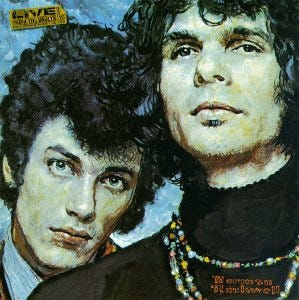

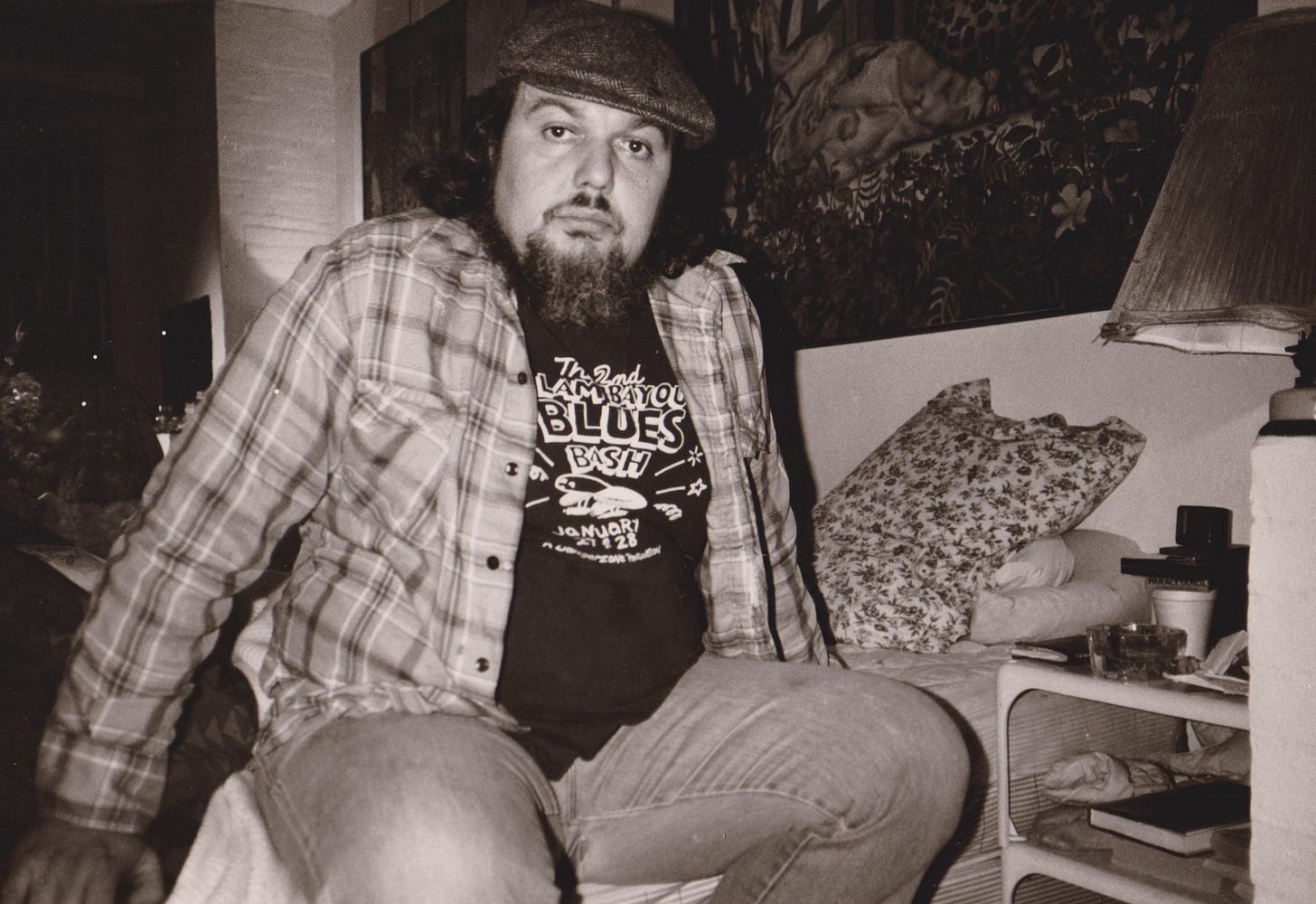
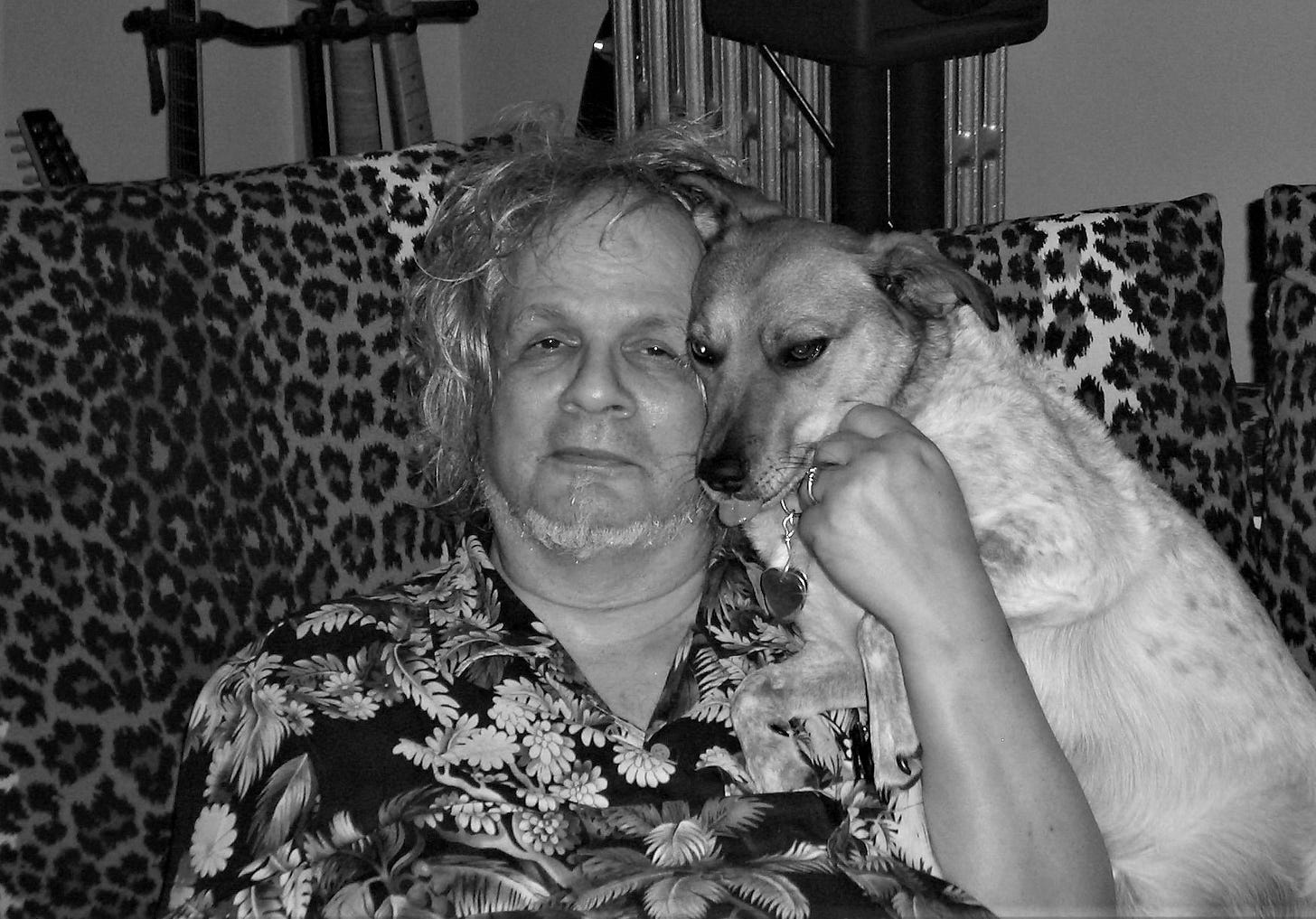
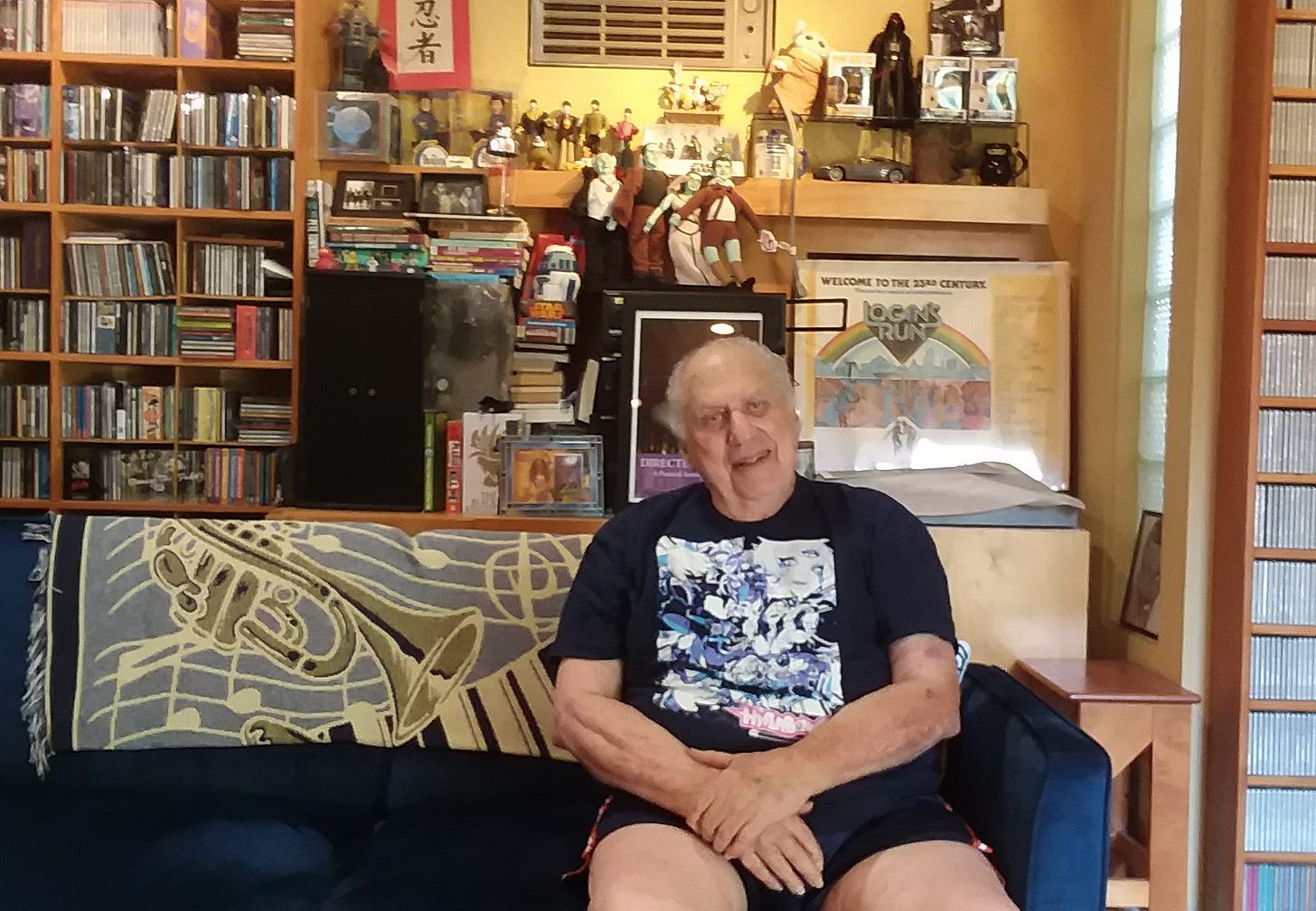

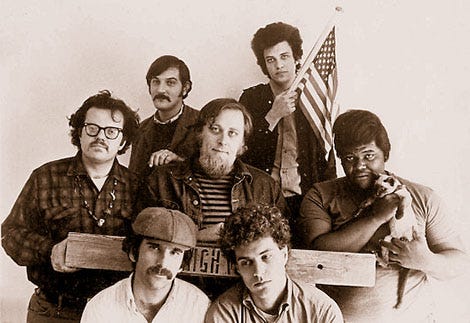
John, great article. One of my favourite albums is Mike playing with Woody Herman on Brand New. Classic!
Really enjoyed this, John. What a great selection of quotations by the people in Bloomfield’s life. Reading this made Mike come alive for me.